Sightseeing Spots
Search Results314
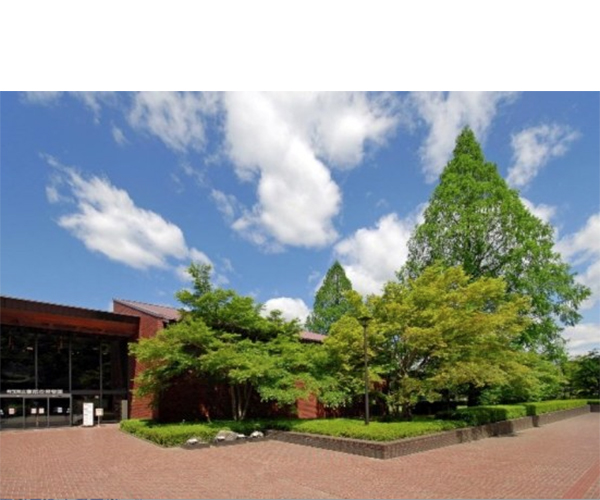
Presenting the theme, "From the past to the future: traveling 300 million years through Saitama's history of people's coexistence with nature," Saitama Museum of Natural History stores various resources related to nature, and displays the fossils of giant shark, “Megalodon," and mysterious sea animal, “Paleoparadoxia," discovered in Saitama Prefecture. The museum is constructed into two halls: the "Geology Exhibition," where visitors can learn about various fossils, rocks and minerals, geological strata and earth formations, and the "Biology Exhibition," featuring large dioramas of the four major forests of Saitama and the animals that live in them. Nagatoro area is a perfect example of the nature in Saitama, and here you can enjoy detailed explanations of its characteristics for a deeper understanding. You can also enjoy simulations and free audio guides. (For more information regarding the facility, please refer to the URL below.)
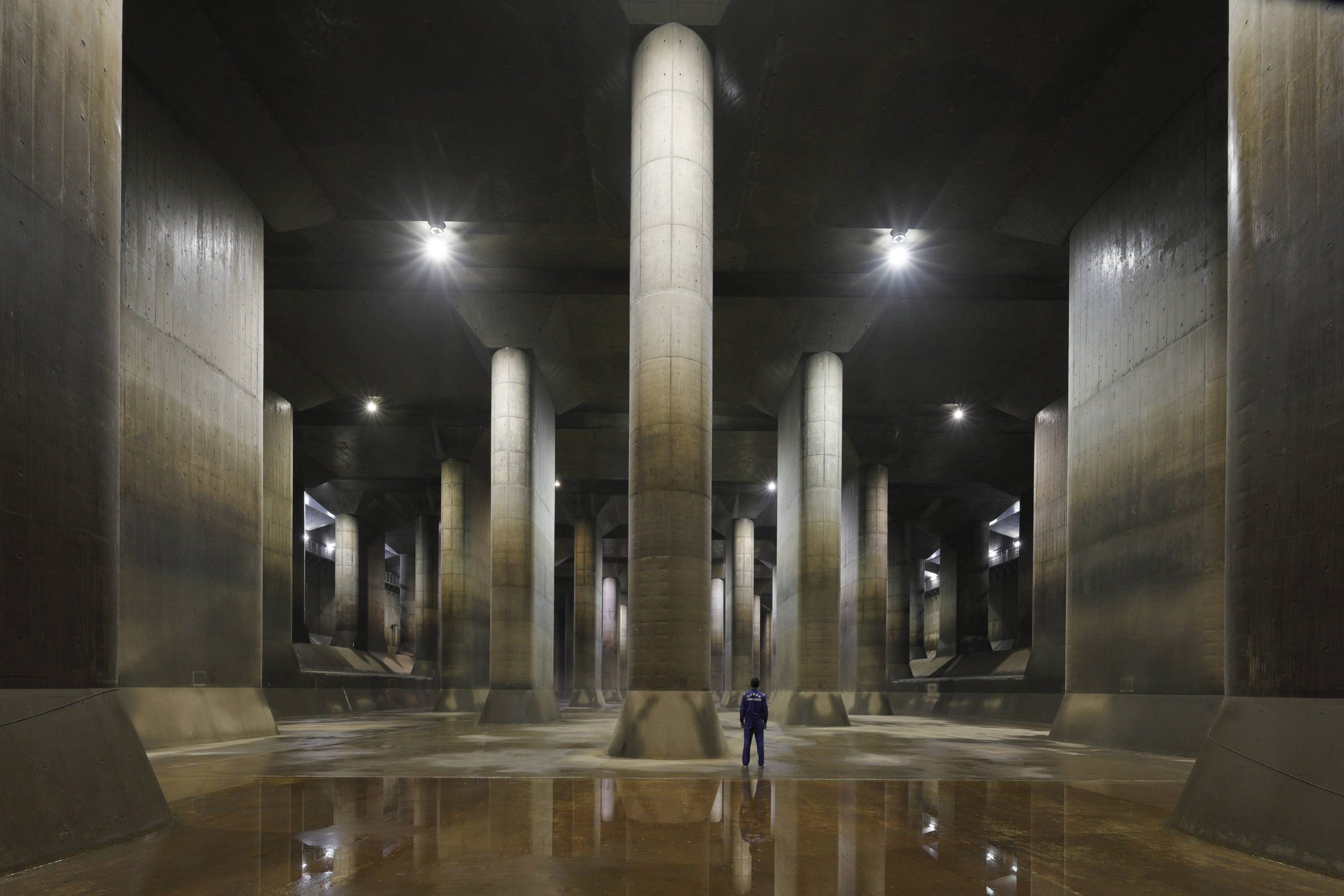
To help visitors learn more about the role of the regional flood control facility, “Metropolitan Area Outer Underground Discharge Channel,” we have increased the appeal of our tours and begun the second installment of this ongoing social experiment. In addition to the wildly popular tour of the surge tank, known as the "underground shrine," we have added secret passages, pump rooms, and sections of the gas turbine which will be opened to the public in 4 different courses. We encourage you to experience the grandeur of the “Metropolitan Outer Area Underground Discharge Channel.” Please check the URL below for details regarding tours and facilities. Notes on the reservation site: You can switch to English by clicking on the mark next to the earth symbol in the top right corner of a header section
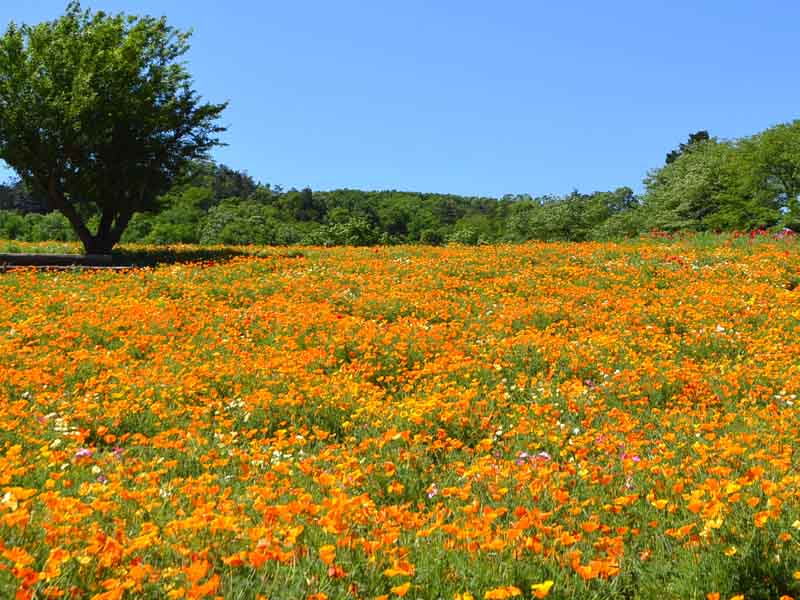
This garden is located on a vast field of about 10,000 square meters behind the Nagatoro Town Folk Museum. The Japanese name "Hanabishisou" comes from the shape of the California golden poppy, which is said to resemble a rhombus ("hishi" in Japanese, read "bishi" in the name). In early summer, California golden poppies bloom all over the entire hill, and from May to June, the contrast between the deep blue sky and the vivid orange flowers is mesmerizing.
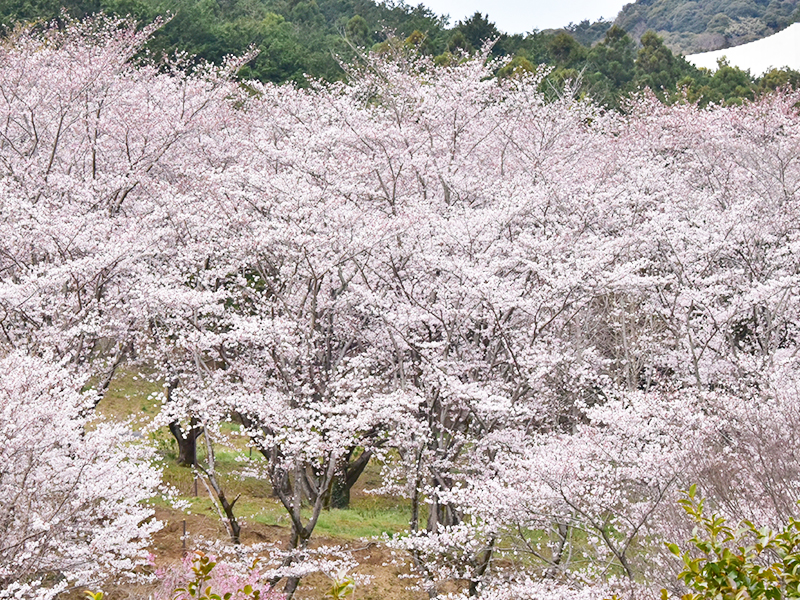
Around 300 Someiyoshino cherry trees are in full bloom at Sakuranoyama Park in early April and the mountain peak boasts a view that overlooks the Saitama-Shintoshin area. A large fireworks display is held every year on the second Saturday of May.
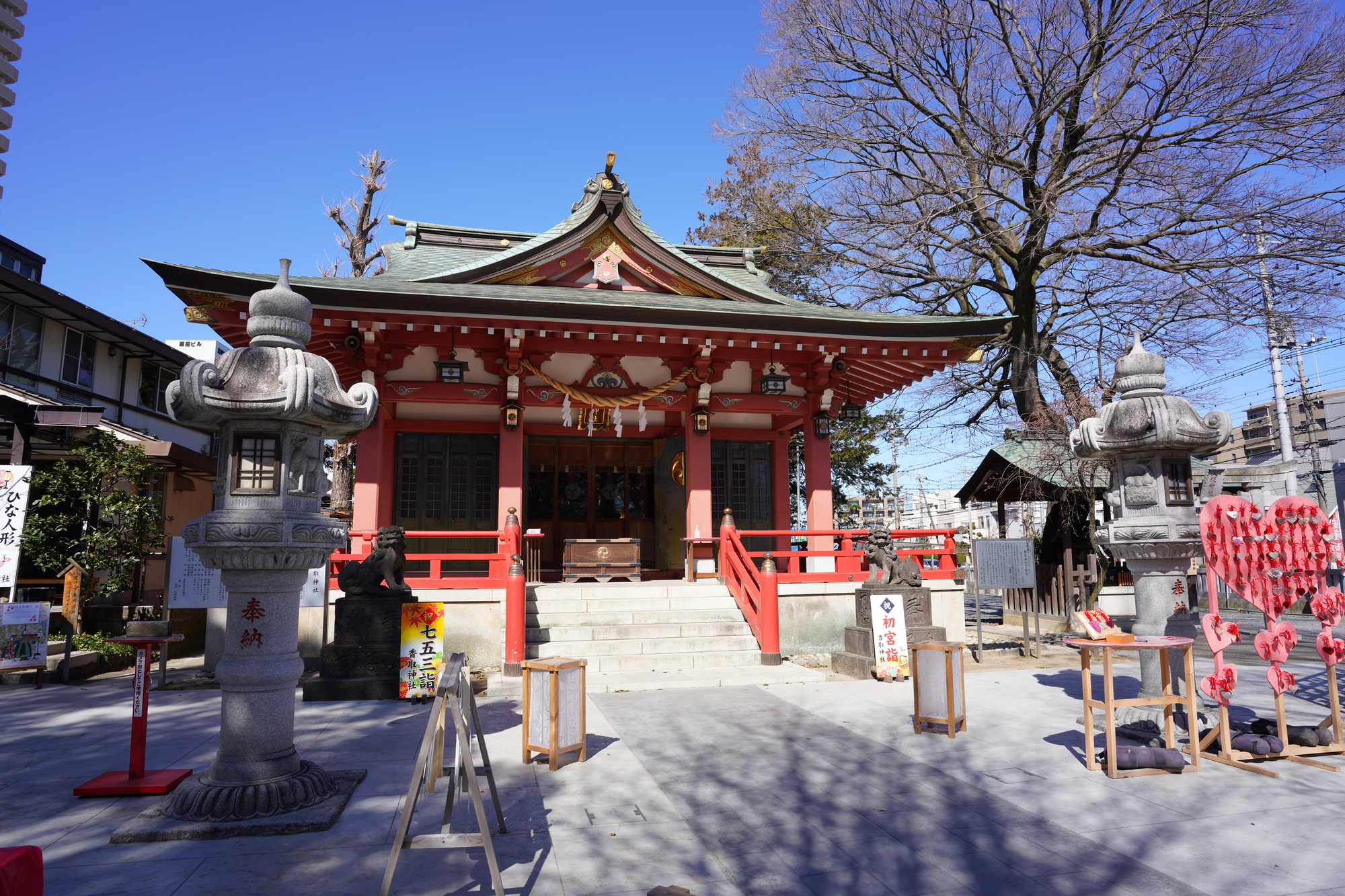
This is the Ōsawa village shrine. It is said the Katori Shrine was transferred here from Sagishiro. The “Meisaichō” notes the shrine's establishment as Ōei era (1394 to 1428). This area belonged to Shimōsa Province in the middle ages, and Katori Shrine, the province's first shrine, was invited to the village as its guardian deity and built in Sagishiro. It was moved to its current ground around the Kan’ei era (1624 to 1644) due to the maintenance of the Ōushū Kaidō. According to the sign displaying date of construction (munafuda), the current main shrine was renovated in 1866. A pattern from the fabric-dyer is engraved around one side of the main shrine. It is the work of Takejiro Hasegawa who resides in Mount Asama San’ya-machi and is the city’s designated cultural property.
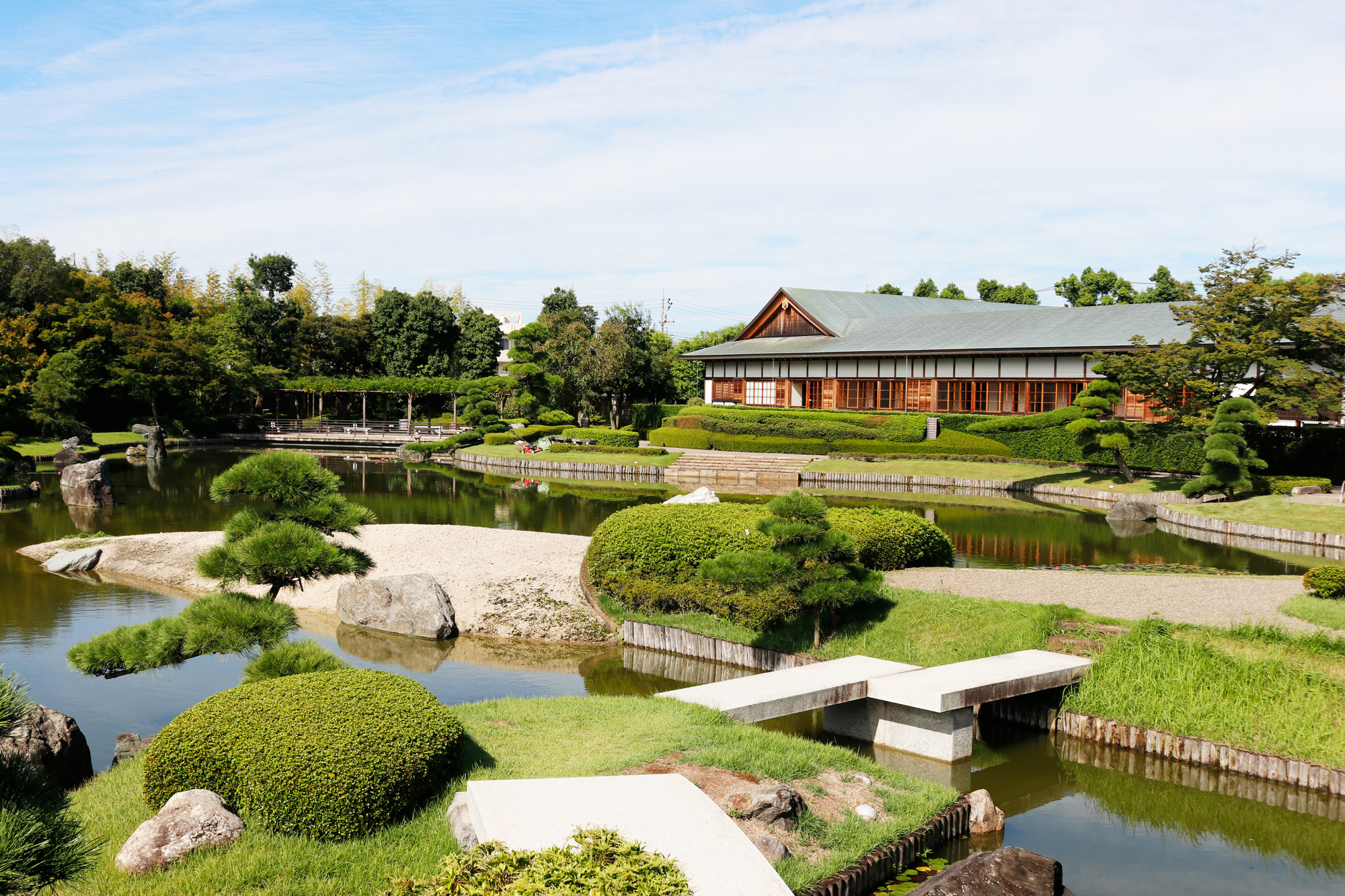
Hanataen is a traditional Japanese strolling pond garden (kaiyu shiki teien) of about 2 hectares, with a characteristic wooden bridge centered on a beautiful pond, a tea room built in Sukiya style, a man-made hill overlooking the garden and elegant stone lanterns. Various trees such as cherry blossoms and plums also grow, and you can enjoy the seasonal flowers and foliage. In addition, the garden is adjacent to Saitama Prefecture's only outdoor Noh (traditional theater) stage, Koshigaya Noh Theater. A great place to both enjoy the beauty of Japan's culture and the four seasons.
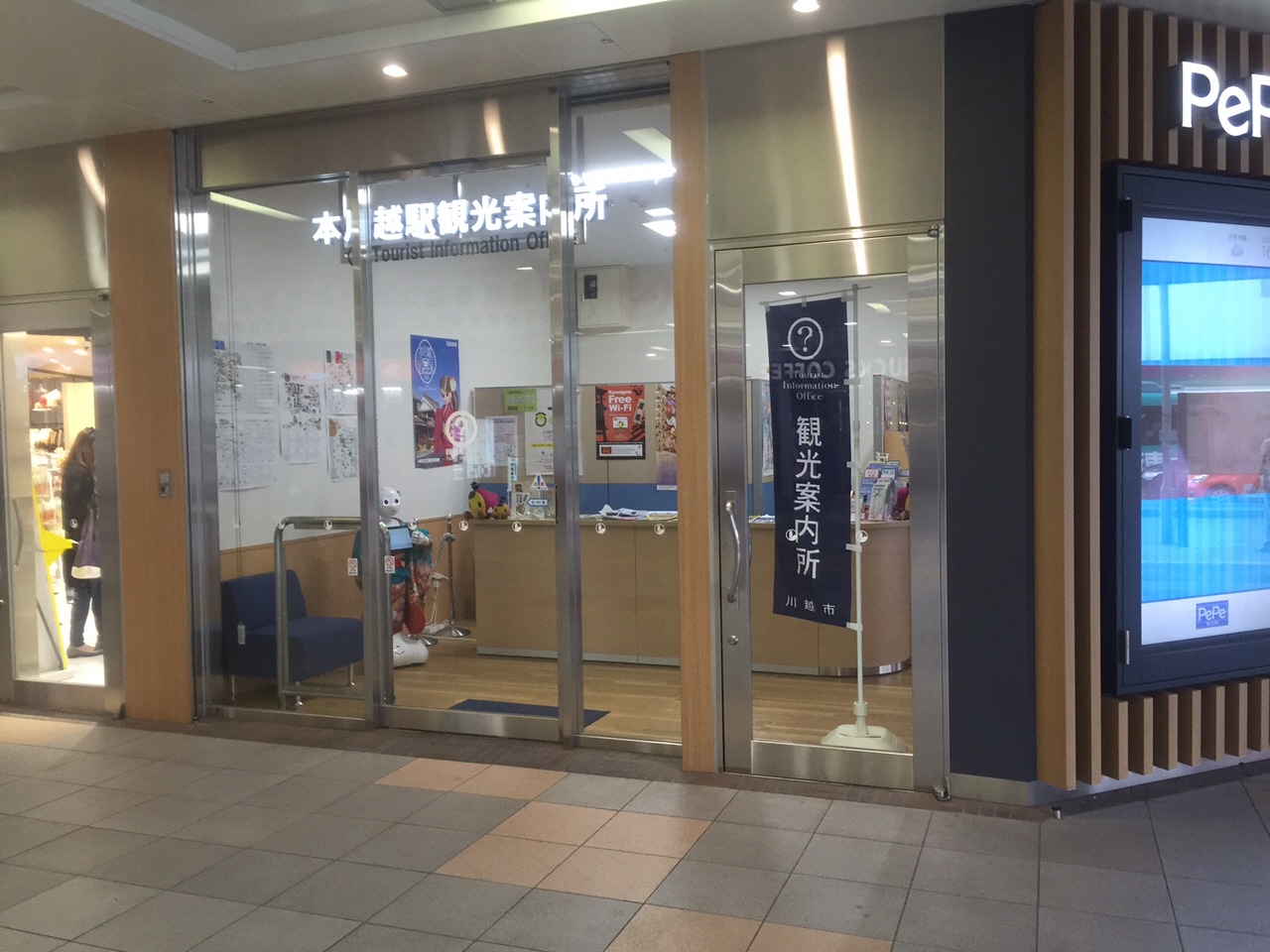
Located on the first floor of Pepe Honkawagoe Station of Seibu Shinjuku Line, we offer tourist information and sightseeing brochures. We are the closest visitor information center to Koedo Kawagoe and the Kurazukuri townscape. In addition, we offer wheelchair rental and baggage storage services (payment required).
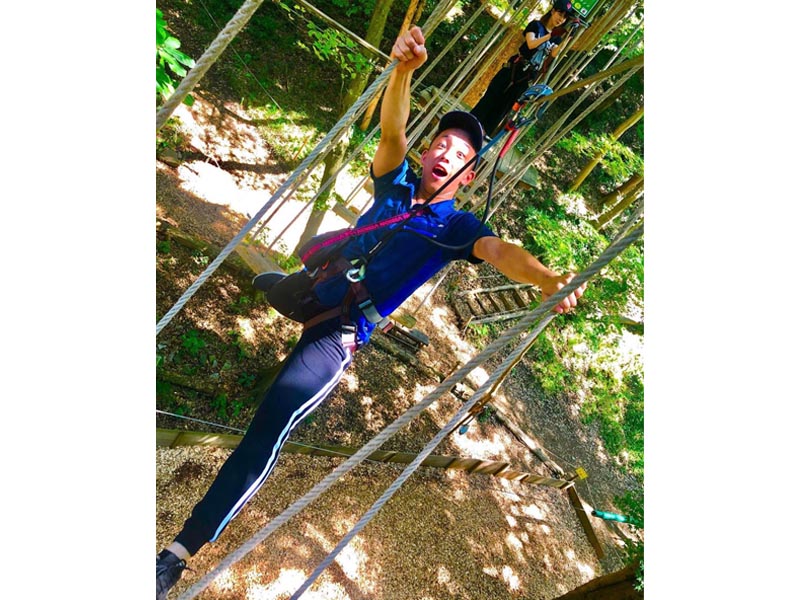
Located in Chichibu Muse park's "Forest of Sports," this is a facility that anyone can enjoy regardless of age! In a mix of planted and native forests, seven zip lines have been installed high above the valley, making it one of the largest parks in Japan. The park is for adults and children aged 10 years and older. The courses are set at high altitudes making this forest adventure particularly popular among adults!
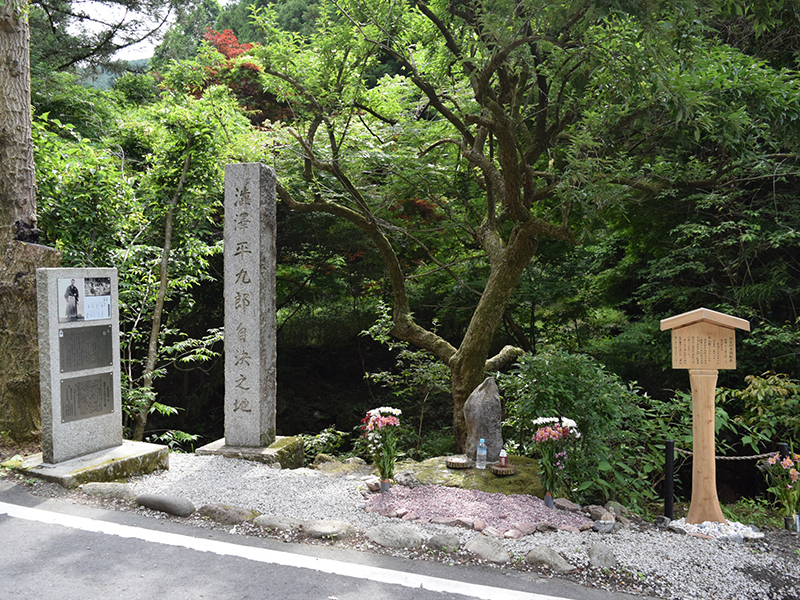
On May 23, 1868 (Keio 4), Heikuro Shibusawa, a member of the old shogunate army who was defeated in a battle with new government forces at Hanno, fled alone towards Kuroyama Village via the Kaoburi Pass. He encountered a patrolling scouting party and fought them alone, but was badly wounded and committed suicide (harakiri) while sitting on a rock on the river bank. Heikuro was a cousin, brother-in-law, and adopted son of Shibusawa Eiichi, the man known as the "father of Japanese capitalism," whose face appears on the 10,000 yen bill.
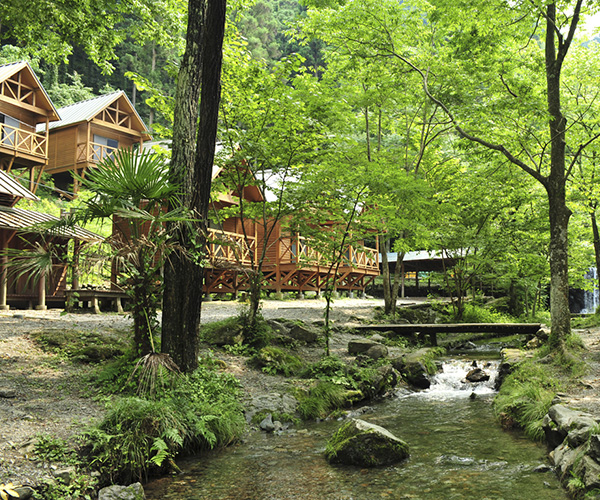
This campsite is surrounded by trees and located in the ravine alongside the Tokigawa River. The facility is well-equipped with a building for cooking, showers and restrooms, making it a safe place to have fun camping. Japanese salmon and char fish swim in the nearby shallow river, giving visitors an up-close-and-personal experience with the great outdoors.
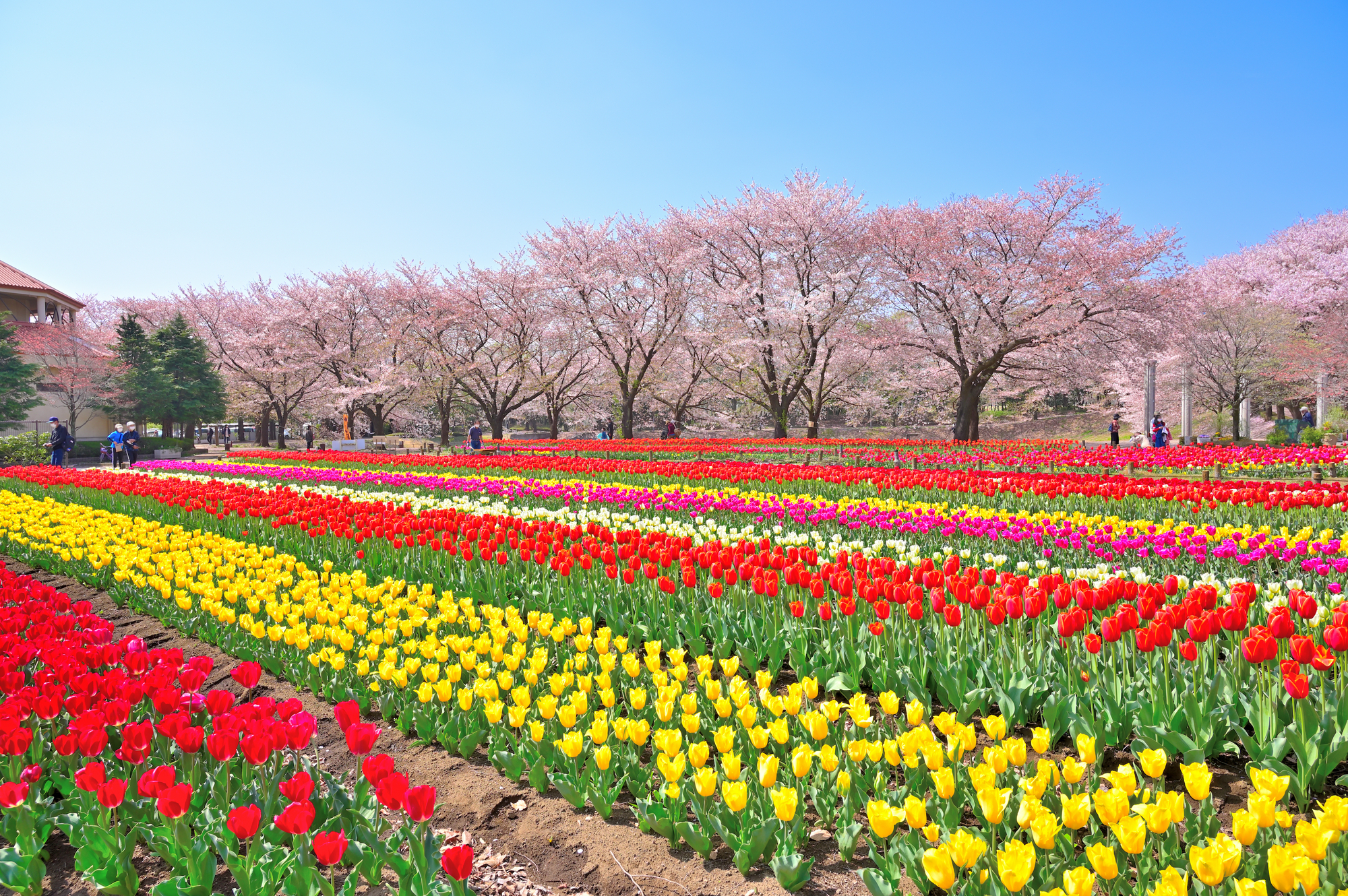
Fukaya Green Park was opened in Fukaya City in July of 1996 as a government-subsidized project of the Ministry of Agriculture aiming to promote agriculture and stabilize and strengthen management, while also contributing to citizens’ health and physical fitness. The park covers an area of 54,000sq m, around the size of Tokyo Dome. It consists of an indoor facility, Paradise Patio (known as “Patio”), and many large and small plazas, such as grass lawn plazas. Patio (area 7,769sq m) is designed after south European and Mediterranean coastal resorts, and features the largest all-weather indoor leisure pool in the north Kanto area. The park’s large flowerbeds (1,157 sq m) filled with flowers are another highlight.
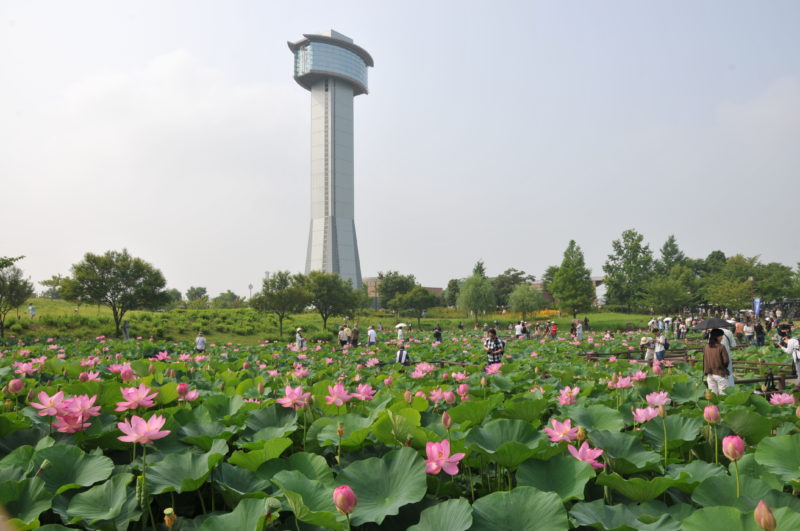
From mid-June to early August, 12,000 stocks of 42 different types of lotus flowers bloom on the surface of this lotus pond. The Gyōda lotus (ancient lotus) is a primitive form with few petals; it is said this variety of lotus is from about 1,400 to 3,000 years ago. Lotus flowers are best viewed midmorning. There are aquatic plant botanical gardens, aquatic bird lakes, peony gardens, plum tree groves, and a spot for flower viewing (hanami) cherry blossom trees, making it a place to go to feel the beauty of nature all year round. In addition, from mid-July to mid-October, rice paddy art is at its prime and can be viewed from the Ancient Lotus Hall’s Observation Room. The rice paddy art of Gyōda City started in 2008, with annual rice transplanting taking place with the help of several volunteers and participants. Not only are the designs original, but some have been featured in movies, TV shows, games. In 2015 it was recorded in the Guinness World Records as “the world’s largest (rice paddy art).”
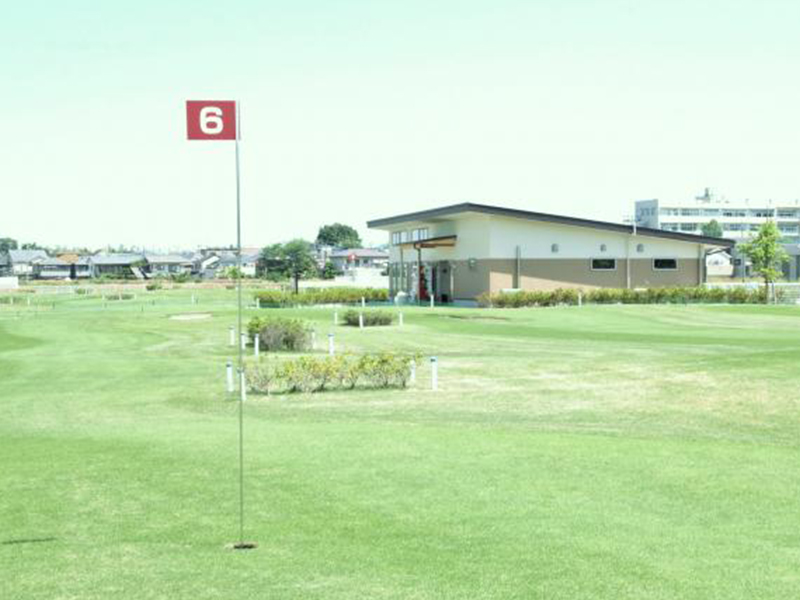
This district park is known for its stunning lawn of green grass and 18-hole golf course. In addition to the golf course, there is also a children's area, a multipurpose plaza, and a parkway that can be used for jogging and other activities. The park enables people from different generations to meet and enjoy spending a relaxing and healthy time together outdoors.
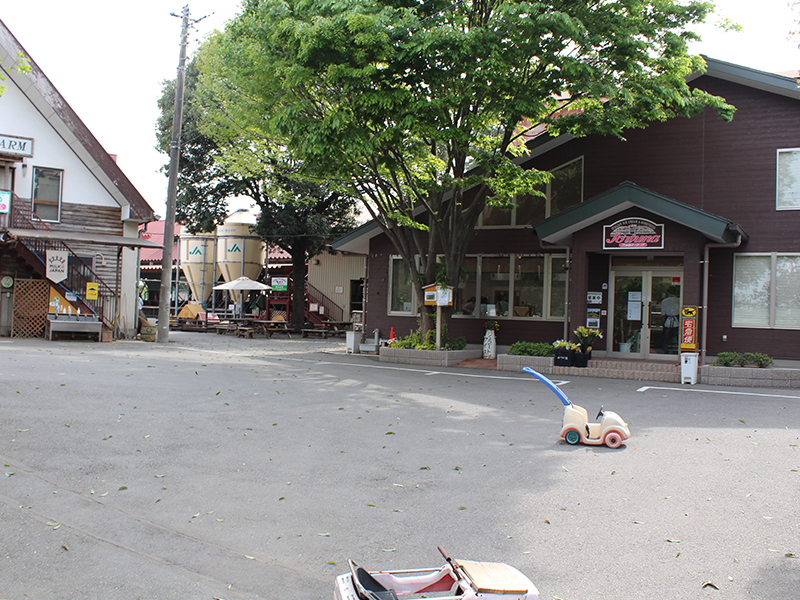
This dairy farm allows visitors to experience farm life and enjoy freshly made gelato ice cream and yogurt. In addition to dairy cows, the farm is home to a variety of animals, including chickens, Japanese Bantam (ornamental chickens), mini pigs, rabbits, guinea pigs, and more. Kids can also play with toy cars and tricycles donated to the farm by locals. Enjoy the view of the Arakawa River and its surrounding nature while tasting some of the best fresh gelato ice cream you've ever had. Enoboku, a miniature Hokkaido, hidden in the beautiful Ageo!
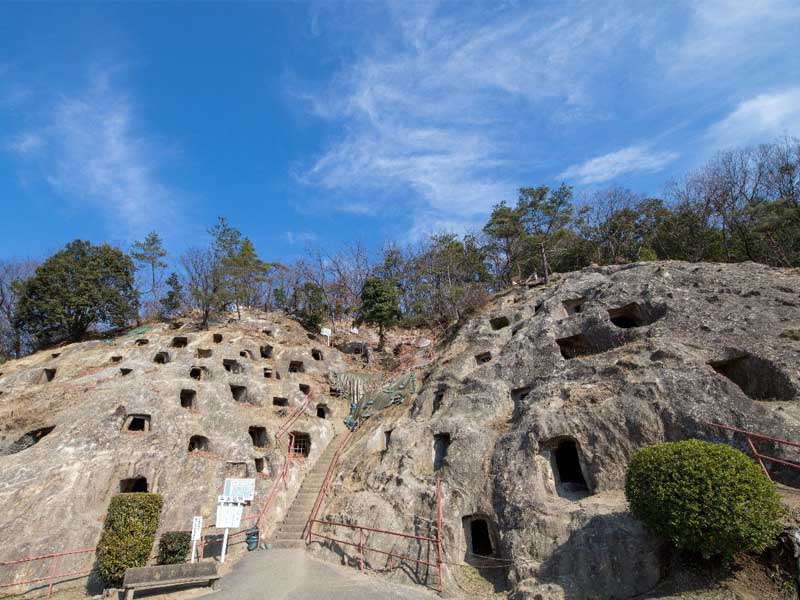
The Yoshimi Hundred Caves are a mysterious group of horizontally carved rock tombs created at the end of the Kofun period (late 6th to 7th century), and designated a national historic site in 1918. There are 219 holes confirmed in total, and the tombs represent Yoshimi Town with their significance. Each hole is divided into a narrow passage and a burial chamber, and the protected species, luminous moss, also known as goblin gold, can be found growing in the tombs.
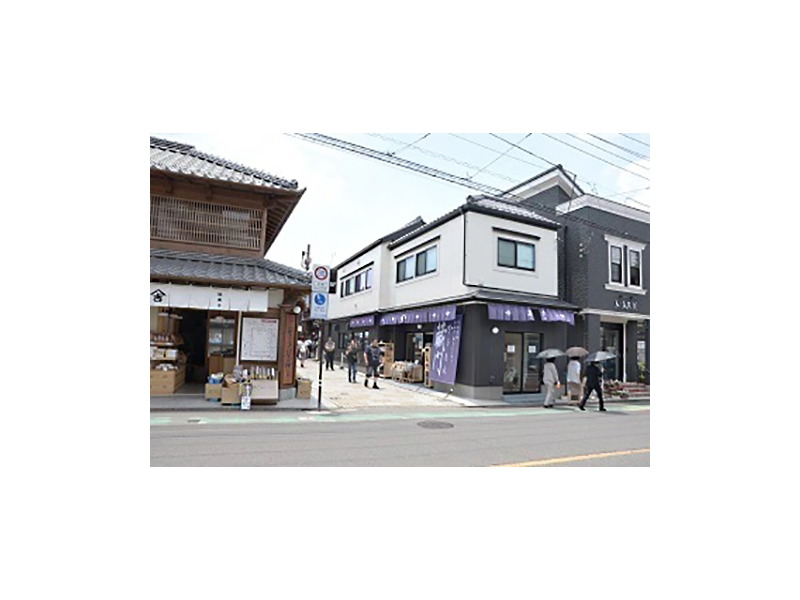
The entrance of the Kawagoe Kashiya Yokochō candy store is marked with a large purple noren (shop curtain with emblem and name). A wide variety of sweets are produced and sold here, including kura manjū (Japanese-style bun stuffed with sweetened bean paste), sweet potato yōkan (sweetened bean jelly), potato sweets, and rice crackers. We can assist you in basic English.
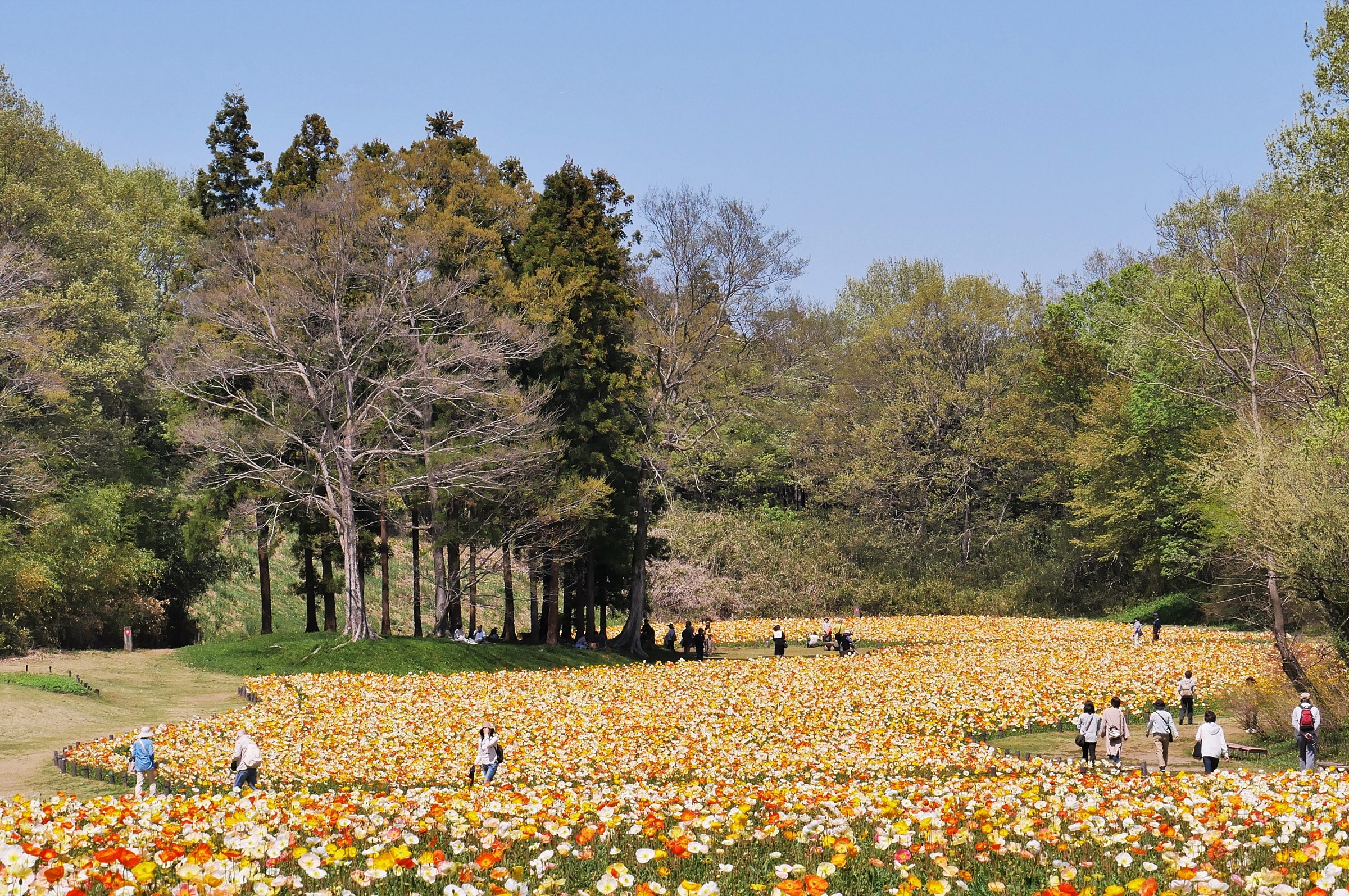
Musashi Kyuryo National Government Park is Japan’s first national government park, developed as part of the Meiji Centennial Commemorative Project. It spans a vast 304-hectare hilly area that straddles Namegawa Town in Hiki District and Yai in Kumagaya City, Saitama Prefecture. The park features a diverse natural environment, including woodlands, ponds, marshes, wetlands, and grasslands, providing a habitat for many valuable plant and animal species. It also serves as a place where visitors from the Tokyo metropolitan area can connect with and appreciate nature.
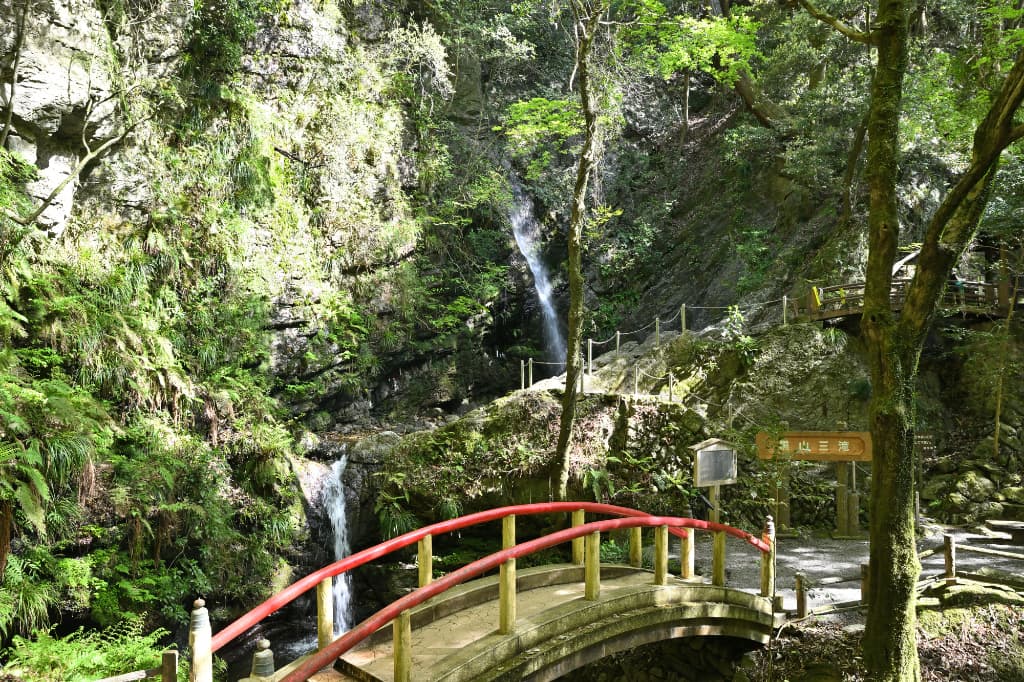
Within Ogose Town in Iruma sits a scenic area where you can find the Three Waterfalls of Kuroyama (Kuroyama Santaki): Odaki, Medaki, and Tengu Taki. It has been selected as one of Japan's top 100 tourist destinations. During summer, the pure mist from the cascading waters and the rich greenery that surrounds the area provide a coolness that helps you forget the hustle and bustle of city life. It's an ideal summer retreat where you can heal from the fatigue of the everyday and refresh both mind and body. The area has also long been revered as a powerful sacred site for “shugendo” mountain asceticism practitioners. Many come here to experience the energy of nature with their whole being and to pray for better fortune. With beautiful fresh greenery in spring and stunning autumn colors, the Kuroyama Santaki area shows different faces throughout the seasons. Please consider visiting this remarkable place at least once!
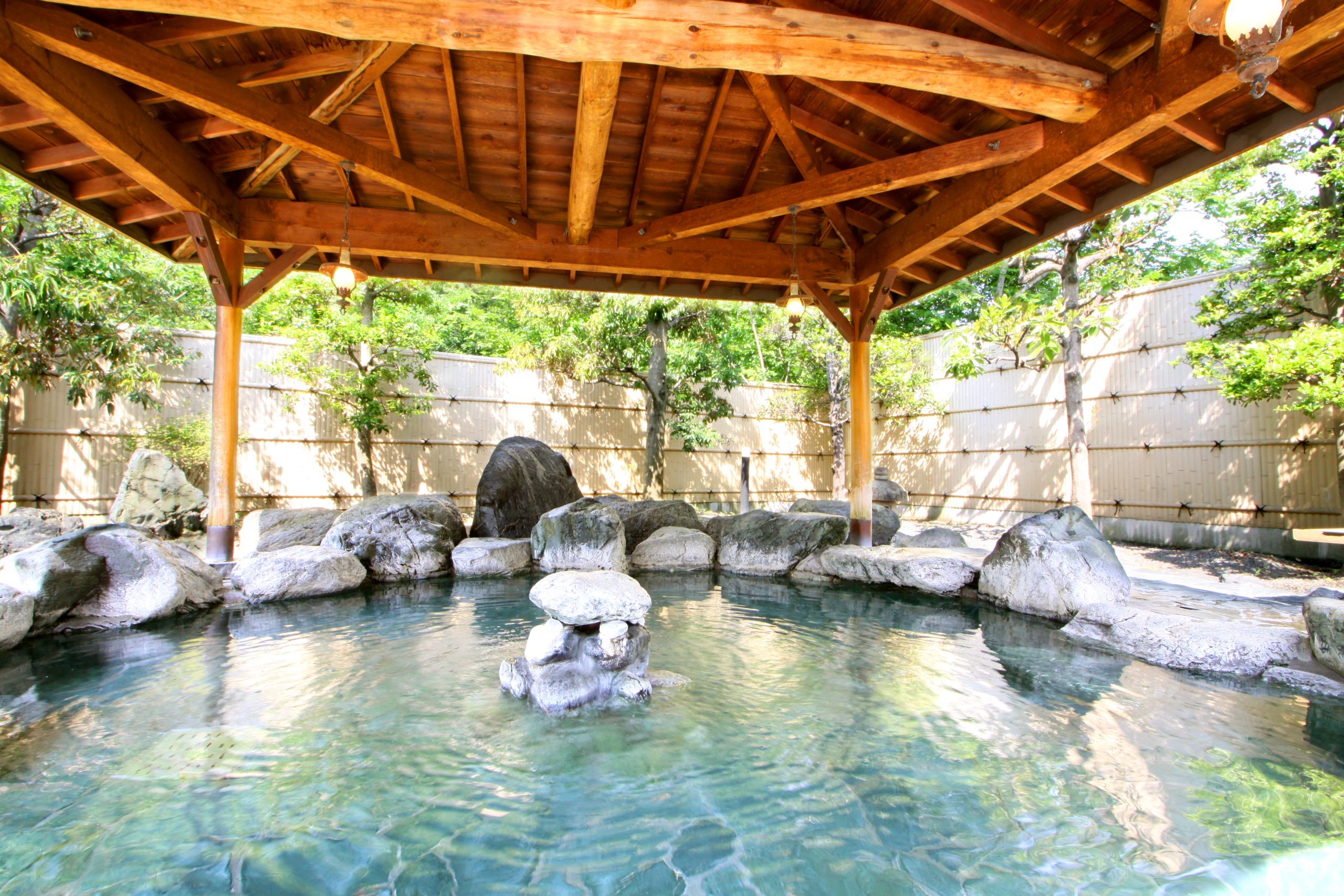
A simple sulfur hot spring. Chichibu Yumoto is a day trip hot spring with the Bukō Onsen as its source, and is effective for a range of chronic diseases such as nerve pain, sore muscles, joint pain, stiff shoulders, and poor blood circulation. One can fully enjoy nature in the liberating open-air bath with the hinoki (wooden) bath, which gives the gentle feeling of trees, and the rock bath, which provides a simple natural atmosphere. Nearby there are also Bukō Auto Campsite (Phone Number: 0494-23-8229) and lodging facility Bukō Onsen Bekkan (annex) (For reservations: 0494-24-4141).
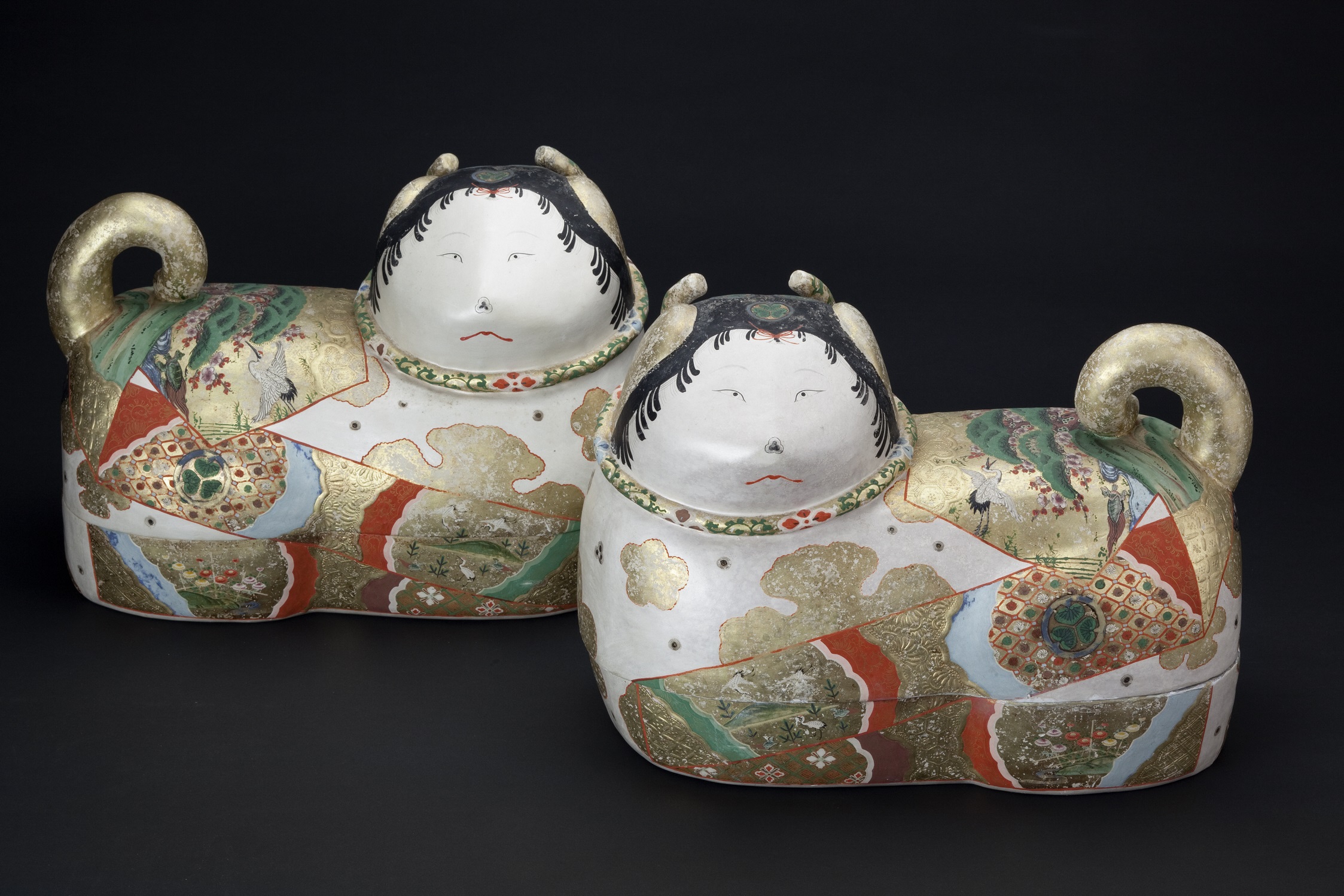
“Saitama City Iwatsuki Ningyo Museum” was opened in Saitama’s Iwatsuki Ward in 2020 and explores the history of dolls and their role in people's lives, promoting the culture of dolls for the future. We are working on a project to make dolls more familiar to people through exhibitions and activities, as well as collecting and storing documents related to dolls and researching about the culture of dolls. (For more information, please see the URL below)
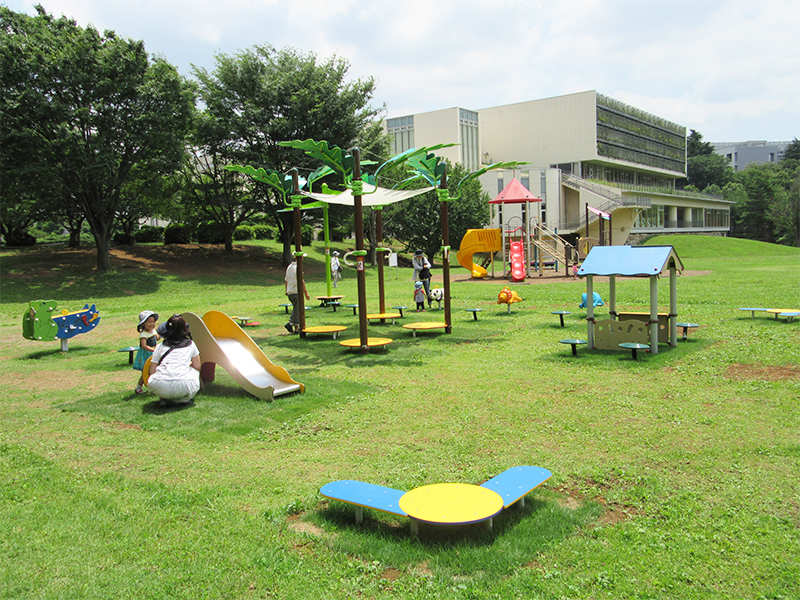
This 20-hectare park was established in March 1989 on the former site of Camp Drake, which was confiscated by the U.S. military in 1945, to ensure a comfortable living environment with beautiful urban landscape. The park is well known as a place for sports and recreation, with an outdoor plaza and jogging course. This vast park is also used as an evacuation site. Nearby are Tokyo Metropolitan Oizumi Central Park, Oizumi Sakura Sports Park, Tokyo Yono Green Belt (Nagakubo Ryokuchi), Niiza Green Path and Sakae Green Path in Niiza City, together serving as a large green belt that straddles municipal and prefectural borders.
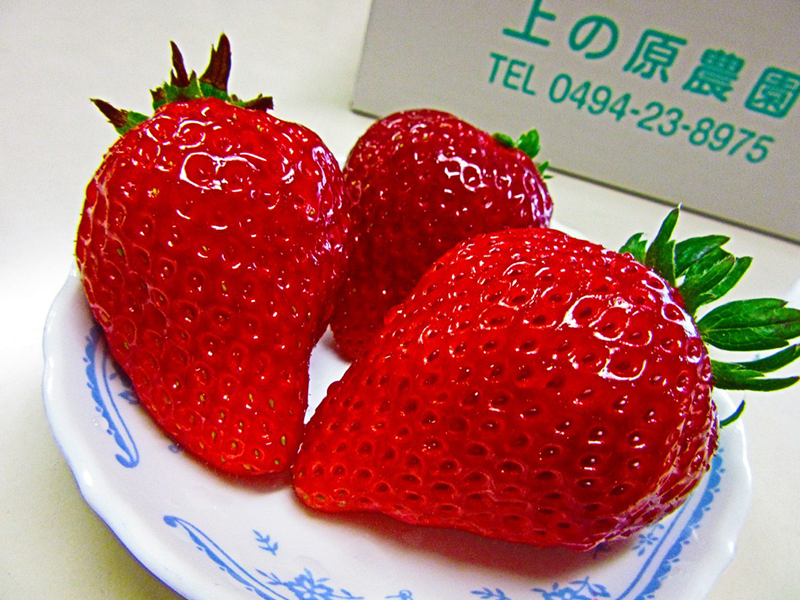
Enjoy the all-you-can-eat package at the farm, or pick and take the strawberries home instead! It's possible the all-you-can-eat will be finished depending on the season's harvest. All-you-can-eat varieties: Beni-poppe, Tochiotome, Yayoihime, Souvenir varieties: Amarin, Beni-poppe, Tochiotome, Yayoihime
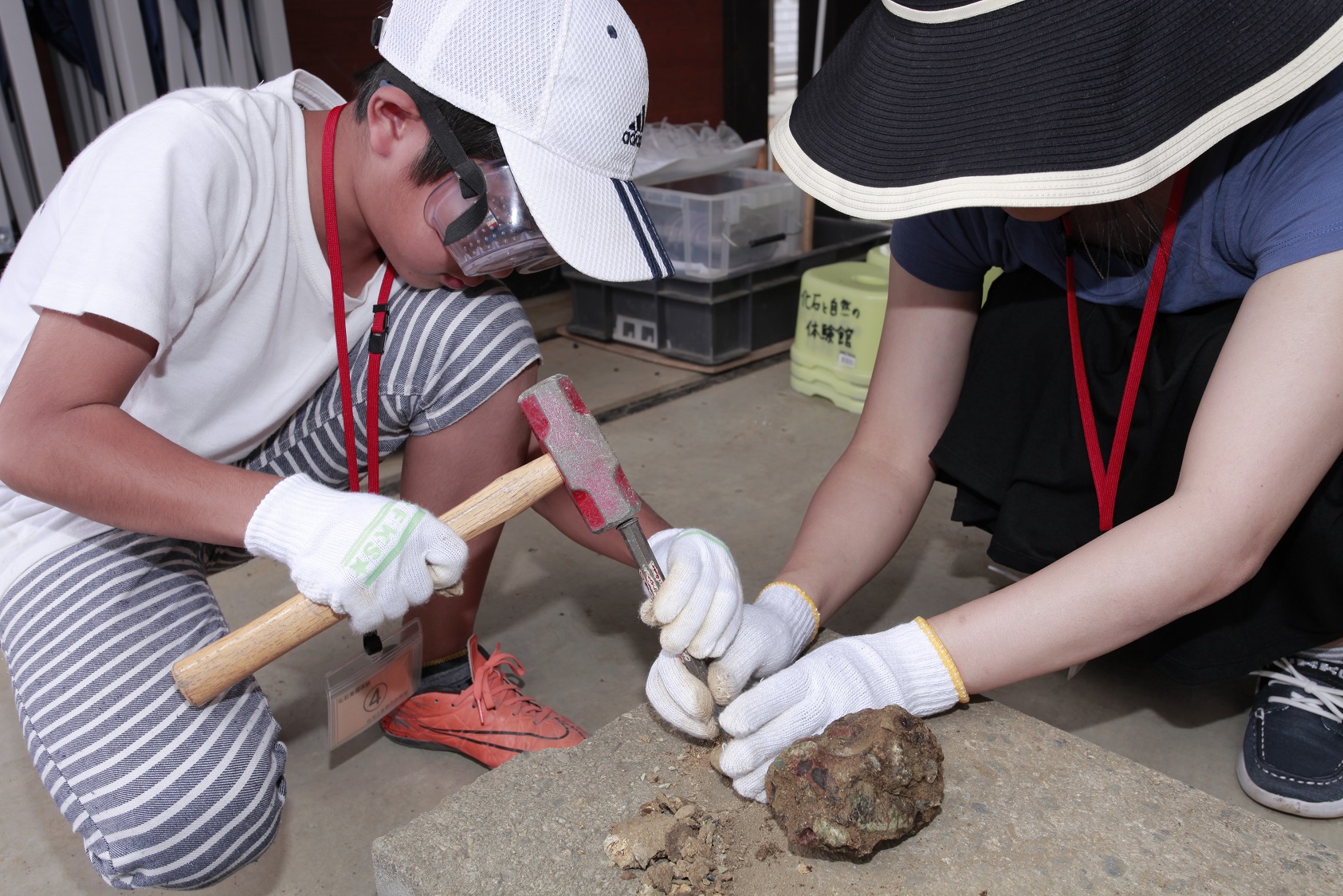
The Iwadonokyūryō (rocky hills) around this experience center are comprised mainly of the Toki River layer group, strata accumulated in the sea 10 to 15 million years ago, which contain a wide range of fossils. This experience center is the only facility in the prefecture where visitors can experience digging up fossils, such as shark teeth, from 15 million-year-old conglomerate rock. Together with the lecturer, challenge yourself to dig up fossils using a sieve, hammer and chisel! Most of the fossils you find can be brought home, with some exceptions. Since the fossil digging takes place inside the facility, activities can be enjoyed even on rainy days.
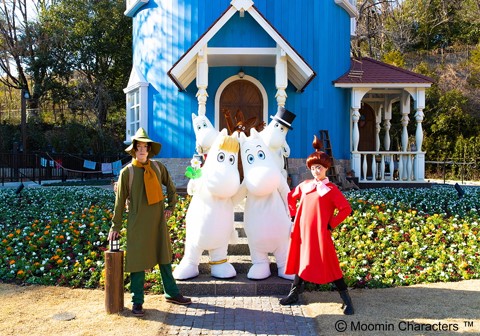
At the Moominvalley Park in Saitama Prefecture, based on the popular creation, ‘Moomins,’ by Finnish author and artist Tove Jansson, you can immerse yourself in the delightful world of Moomin and its popular characters. The first theme park of its kind outside of Finland, it was opened in March 2019 in Hanno, Saitama, and is easily accessible from Tokyo via train. There are four main attraction areas, featuring a variety of theater venues, a large three-story museum, a playground with Moomin landmarks that appear in the story, delicious restaurants, a cafe, and the world’s largest Moomin store! For additional fun, outside Moominvalley Park lies the Metsä Village, where visitors can enjoy a Nordic experience with shopping and dining options, relax around Lake Miyazawako in comfortable outdoor seating viewing the lake and surrounding forest, or take part in various hands-on activities. At Moominvalley Park, there’s fun to be had for everyone!
This site uses cookies to improve the user experience. If you continue to browse, you consent to the use of cookies on this site. Accept
CONTACT
